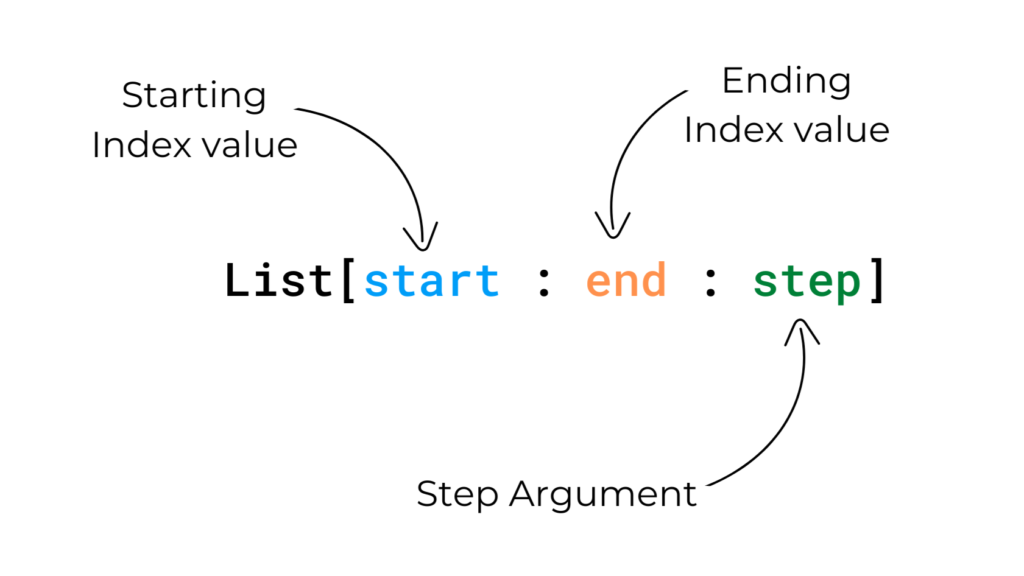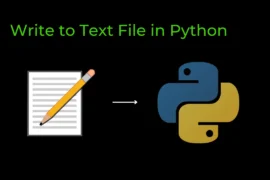Python provides several ways to access and manipulate the items of a list, tuple, or string. These include indexing, slicing, and the step argument.
In this article, we’ll explore Python Indexing, Slicing, and Step Argument in detail and provide examples to help you understand how they work.
Indexing
Indexing allows you to access individual elements in a sequence. In Python, indexing starts at 0, so the first element of a sequence has an index of 0, the second element has an index of 1, and so on.
You can use square brackets [] with the index number to retrieve the element at that specific position.
For example:
string = "Hello, World!"
print(string[0]) # Output: "H"
print(string[1]) # Output: "e"
print(string[2]) # Output: "l"
print(string[3]) # Output: "l"
print(string[4]) # Output: "o"
You can also use negative indices to access elements from the end of the sequence. For example, the index -1 refers to the last element in the sequence, the index -2 refers to the second-last element, and so on.
string = "Hello, World!"
print(string[-1]) # Output: "!"
print(string[-2]) # Output: "d"
print(string[-3]) # Output: "l"
print(string[-4]) # Output: "r"
print(string[-5]) # Output: "o"
It’s important to note that indexing is only valid for sequences that are ordered and have a fixed size, such as strings, tuples, and lists. It’s not possible to use indexing with sets or dictionaries, as these data types are unordered and do not have a fixed size.
Indexing in List
fruits = ['apple', 'banana', 'cherry']
# Access the first element of the list
print(fruits[0]) # Output: 'apple'
# Access the second element of the list
print(fruits[1]) # Output: 'banana'
# Access the third element of the list
print(fruits[2]) # Output: 'cherry'
# Access the last element of the list
print(fruits[-1]) # Output: 'cherry'
# Access the second last element of the list
print(fruits[-2]) # Output: 'banana'
# Access the third last element of the list
print(fruits[-3]) # Output: 'apple'
In the above example, we accessed the elements of the list using positive indices (0, 1, 2) and negative indices (-1, -2, -3). Positive indices are used to access the elements from the start of the list, and negative indices are used to access the elements from the end of the list.
Slicing
Slicing is a powerful method that allows us to extract a specific range of elements from a list or a string. We can use the colon (:) operator to slice a list or a string.
Syntax for Slicing: list[start:end:step]

Here, start is the index of the first element that we want to include in the slice, end is the index of the element that we want to exclude from the slice, and step is the number of indices we want to skip between the elements of the slice.
If we omit the start and end indices, the slice will include all the elements of the list or the string.
For example, consider the following list of fruits:
fruits = ['apple', 'banana', 'cherry', 'mango', 'orange']
# Extract the first three elements of the list
print(fruits[0:3]) # Output: ['apple', 'banana', 'cherry']
# Extract the last three elements of the list
print(fruits[-3:]) # Output: ['cherry', 'mango', 'orange']
# Extract all the elements of the list except the first and the last element
print(fruits[1:-1]) # Output: ['banana', 'cherry', 'mango']
# Extract all the elements of the list in reverse order
print(fruits[::-1]) # Output: ['orange', 'mango', 'cherry', 'banana', 'apple']
You can also use slicing in Strings and tuples.
Step Argument
The step argument is an optional parameter that allows us to skip elements while slicing.
It is denoted by using a third index separated by a colon (list[start:end:step]).
For example:
# Select every other element of the list
my_list = [0, 1, 2, 3, 4, 5]
sub_list = my_list[::2]
print(sub_list) # Output: [0, 2, 4]
You can also use negative values for the step argument to reverse the order of the slice.
For example:
# Reverse the order of the list
my_list = [0, 1, 2, 3, 4, 5]
sub_list = my_list[::-1]
print(sub_list) # Output: [5, 4, 3, 2, 1, 0]In conclusion, python indexing, slicing, and step argument are powerful tools that allow users to manipulate lists, tuples, and strings in a more efficient way.
By using these concepts, we can easily access specific elements, extract ranges of elements, and skip elements as needed.






